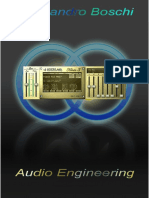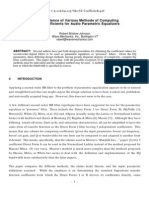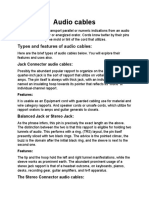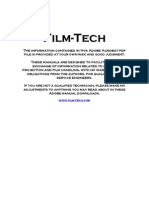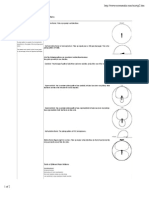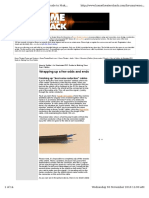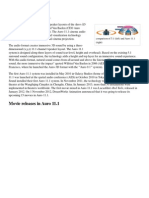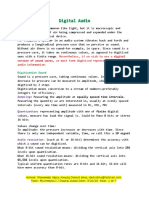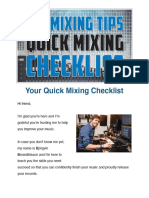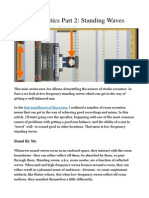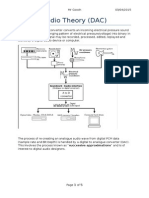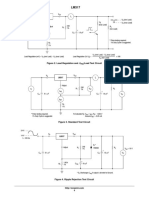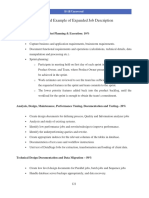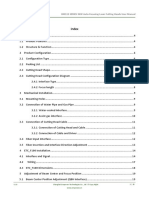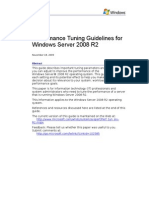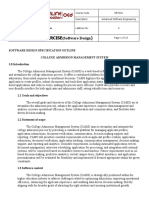0% found this document useful (0 votes)
37 views4 pagesDigital Interfacing
This document discusses the challenges and standards of interfacing analogue and digital audio equipment, focusing on signal levels and the importance of proper alignment. It explains the professional standard of +4dBu and the semi-professional standard of -10dBV, along with the concept of headroom in audio systems to prevent distortion. The article emphasizes the need for careful calibration of A-D converters and the implications of digital signal levels on analogue equipment to ensure optimal sound quality.
Uploaded by
neilywCopyright
© © All Rights Reserved
We take content rights seriously. If you suspect this is your content, claim it here.
Available Formats
Download as PDF, TXT or read online on Scribd
0% found this document useful (0 votes)
37 views4 pagesDigital Interfacing
This document discusses the challenges and standards of interfacing analogue and digital audio equipment, focusing on signal levels and the importance of proper alignment. It explains the professional standard of +4dBu and the semi-professional standard of -10dBV, along with the concept of headroom in audio systems to prevent distortion. The article emphasizes the need for careful calibration of A-D converters and the implications of digital signal levels on analogue equipment to ensure optimal sound quality.
Uploaded by
neilywCopyright
© © All Rights Reserved
We take content rights seriously. If you suspect this is your content, claim it here.
Available Formats
Download as PDF, TXT or read online on Scribd
/ 4





